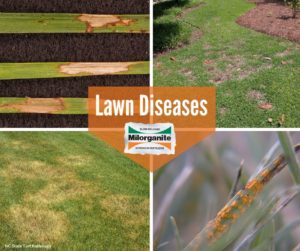
by Melinda Myers, Milorganite horticulturist and gardening expert
Your lush green lawn suddenly develops dead spots. You don’t have a dog, haven’t recently fertilized or sprayed a total vegetation killer on or near the grass. Despite all your efforts to grow a healthy lawn, the weather was just right for a disease to move in and damage your lawn.
Once you discover a disease and have it properly diagnosed, correct your lawn care practices to speed recovery and avoid problems in the future.
Mow high to encourage deeply rooted grass that is more drought tolerant and resistant to disease problems.
Mow often removing no more than 1/3 the total height with each cutting. This reduces stress on the lawn and the small clippings can be left in place to return moisture, nutrients and organic matter to the soil.
Water thoroughly and only when needed to encourage deep roots. Set the sprinklers to run early in the day so the grass leaves, blades, dry quickly and less water is lost to evaporation.
Apply the right type and amount of fertilizer at the proper time to limit the risk of disease. Regular fertilization, three to four times per year, encourages better results since most soils do not contain the essential nutrients for optimum growth.
Avoid high nitrogen quick release fertilizers that promote lush succulent growth that is more susceptible to disease. Instead use a low nitrogen slow release fertilizer like Milorganite that promotes steady growth that’s more drought tolerant and resistant to disease.
Next take a close look at the dead areas in the lawn. Note the pattern of the damage and check the green grass blades on the edge of the dead patches for more clues.
Review the Seasonal Lawn Disease Guide to help narrow down the possibilities. Once you have gathered this information visit Milorganite.com for more detailed information and photos to help with diagnosis.
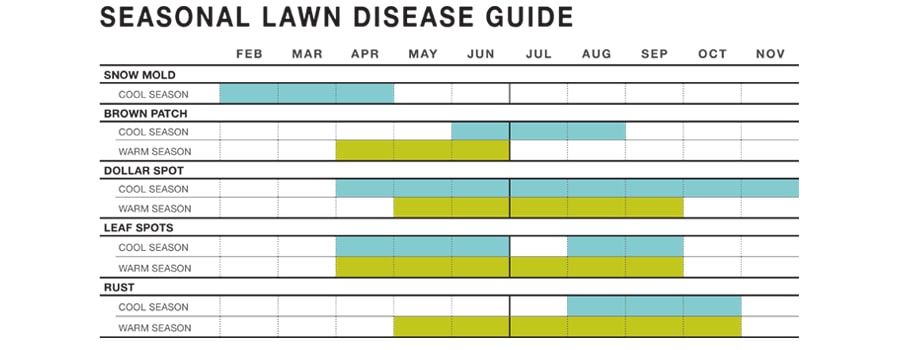
Snow Mold
As the snow recedes, watch for circular gray to straw-colored areas of matted grass caused by snow mold. Use a leaf rake to lift the matted grass, remove leaf litter and reduce the risk of this disease. Keep mowing throughout the fall and avoid heavy fertilization late in the year.
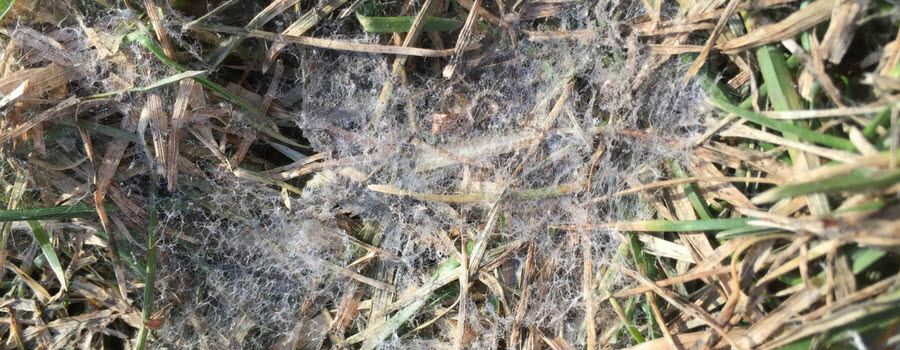
Brown Patch
Monitor lawns for Brown Patch when temperatures and humidity rise and grass remains wet for long periods of time. Infected lawns will have somewhat circular patches of thin light brown grass. Look for white cottony strands of fungal mycelium early in the morning on dew covered lawns. Check grass blades for small irregular tan spots with dark brown borders on the individual grass blades. Avoid heavy fertilization with fast release fertilizer in early spring and summer.
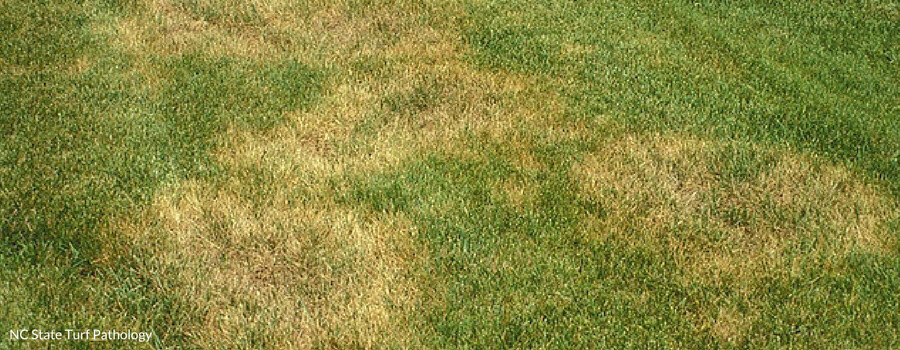
Dollar Spot
Look for dollar size to 6” diameter spots of bleached or light tan grass if you suspect Dollar Spot. Infected leaves have white lesions with reddish tan margins that often resemble an hourglass. Over and under fertilization, drought, water on the grass blades for an extended time and mowing too low all increase the risk of this disease.
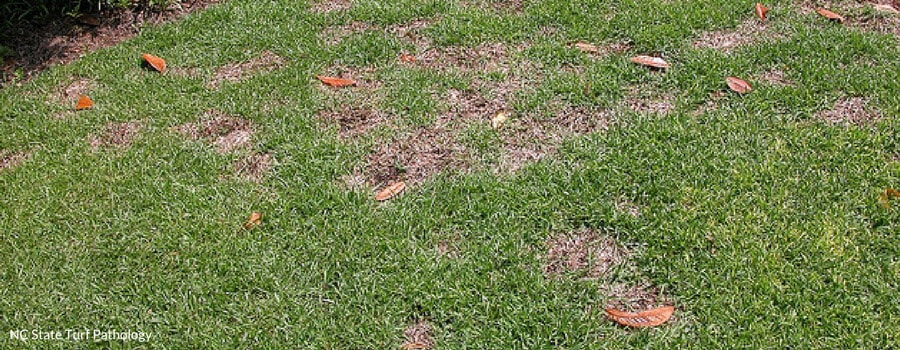
Rust
Closely examine lawns with a reddish hue to confirm the presence of rust disease. Rust infected lawns are covered with an orange or yellowish powder, the fungal spores, that can leave an orange residue on your shoes. Newly seeded and lawns weakened by inadequate fertilization and drought are most susceptible.
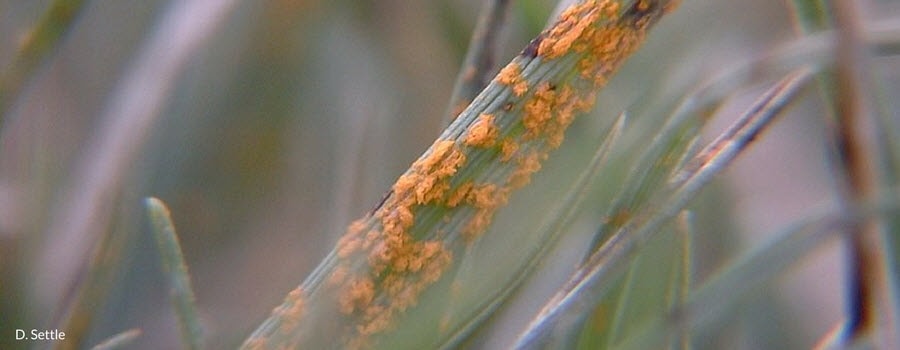
Leaf Spot
Stay alert for leaf spot diseases that can attack lawns. Avoid excess fertilization and watering late afternoon and evenings.
Once you diagnose the problem correct lawn care practices as needed. Proper care and reseeding dead areas with disease-resistant grass varieties is usually enough to manage the disease. Be sure you need a fungicide before applying. These chemicals are costly, the results can be disappointing and when used improperly they can be harmful to pollinators and the environment.
Further speed recovery with a change in mowing habits. Continue to mow high but cut the healthy portions of your lawn first. Then cut the grass in the diseased areas. Once done, use a disinfectant to clean the mower blades then rinse with clear water. This along with collecting and disposing of clippings from the diseased areas of the lawn reduces the risk of spreading the disease next time you mow.
Provide proper care and monitor your lawn throughout the growing season. Discovering problems early means better results with less effort on your part.
ARTICLE REPOSTED FROM THE FOLLOWING LINK
https://www.milorganite.com/blog/Lawn/lawn-diseases?utm_source=FB&utm_medium=Blog&utm_campaign=LawnDiseasesSpring